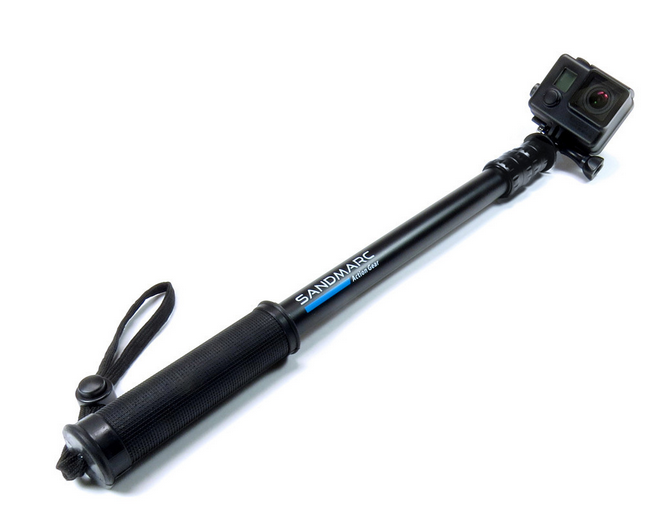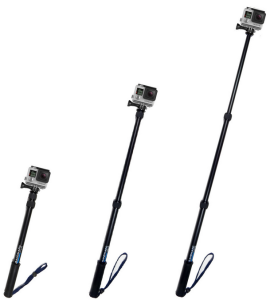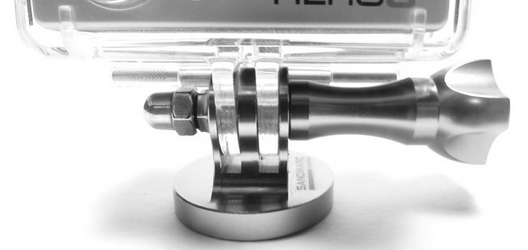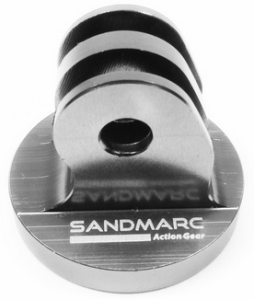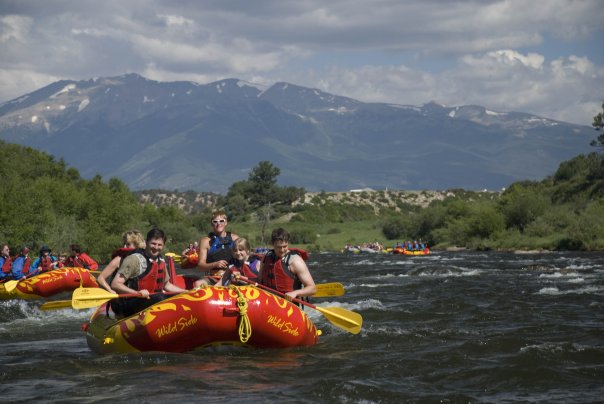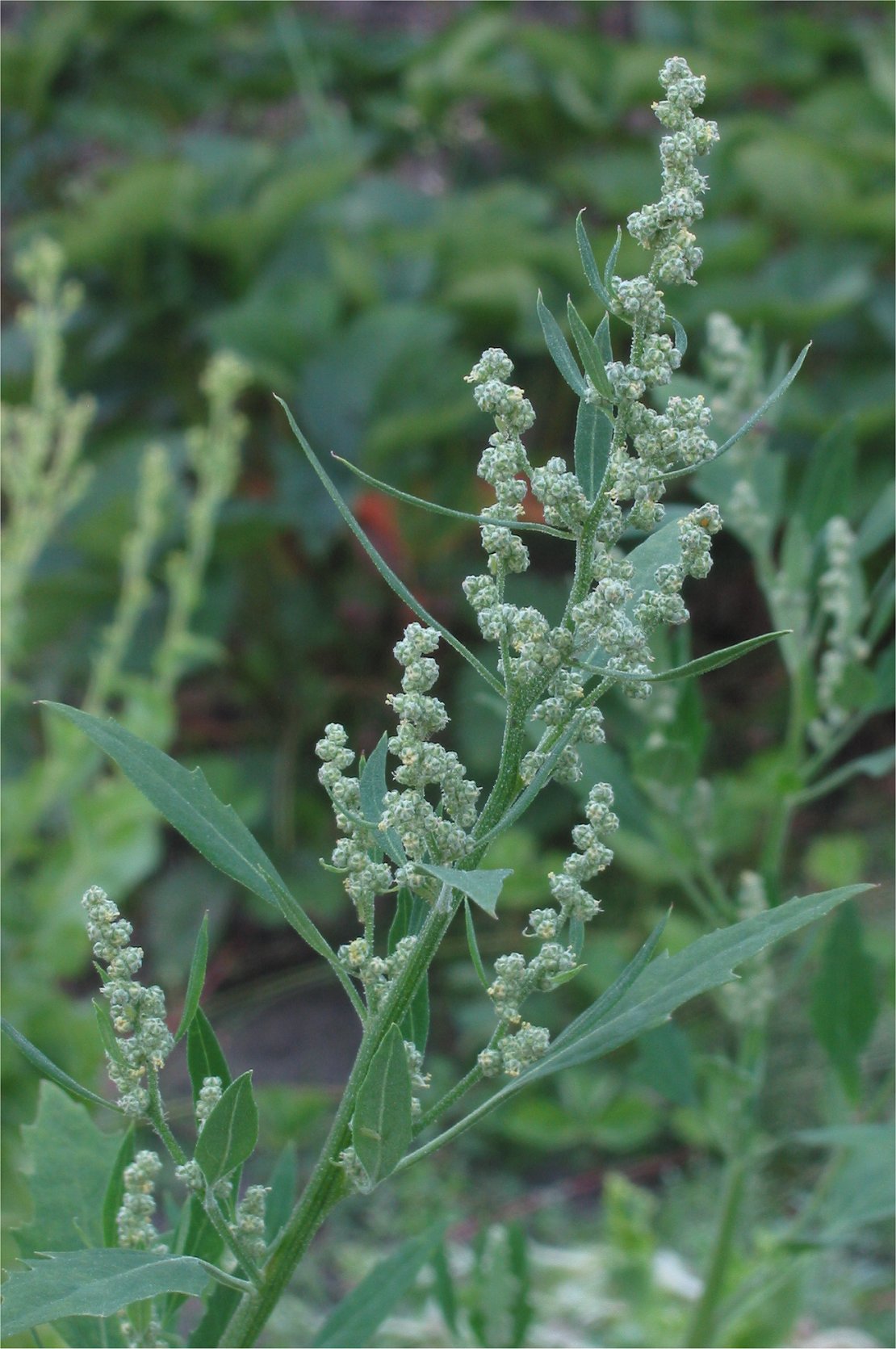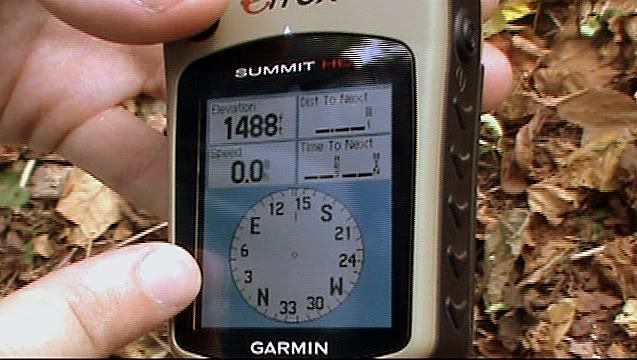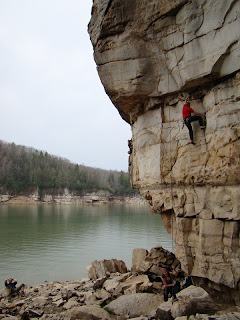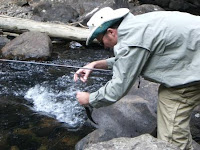by Dave P.
The Sandmarc telescoping pole is a simple piece of equipment. It has one purpose in life. It functions as an extension of your arm to get your GoPro camera farther away from you.
Lately, these extension poles are also being referred to as selfie sticks. While that term may sound negative, there are times when nothing will help you to take as good a picture or video – unless you happen to have your own photographer/videographer to follow you around.
Think about the times you’ve used your phone to take a selfie with your friends. Unless you happen to be an Orangutan, your arm simply isn’t long enough to get the camera far enough away from you to take a good picture. Instead, you and your friends have to gather cheek-to-cheek to get everyone in the shot. Personally, I like the closeness of a cheek-to-cheek picture, but all of your selfies come out looking the same. And forget about getting much of the background in your shot.
Want that great picture of you and your family with the Taj Mahal in the background? Before these selfie sticks, you were forced to stop a stranger, ask them to take your picture for you, and hope they didn’t muck it up. You also had to hope the stranger didn’t desire your camera more than you.
Enter the Sandmarc Metal Edition Telescoping Pole.
It’s advertised to fit all GoPro cameras, including the latest GoPro 4. The only non-metal parts are the rubber handle and the lanyard. The rest is all aluminum. Even the camera mount itself is aluminum and a beautiful aluminum knob is also included. The benefit of aluminum is that you’ve got a strong, lightweight, virtually unbreakable pole that will never rust. Feel free to use it underwater!
The mount is detachable, so you can also use it to mount your GoPro to standard tripods. Conversely, you could detach the mount and if you have a standard screw-on camera attachment, you could use the pole for your other non GoPro cameras.
The pole is comprised of three sections that enable you to extend the pole to any length you need, from the fully collapsed length of 17” all the way out to 40” at full extension. The extensions are loosened or tightened by a knurled knob. It takes nothing more than a quarter twist to either loosen or tighten the fittings.
That’s the nuts and bolts of the Sandmarc pole, but how does it really measure up?
I like it. A lot!
There’s nothing cheap or flimsy about this extension pole. Everything about it feels like quality. It’s sturdy, stylish, and I wouldn’t worry about breaking anything on it. I can’t say the same about some plastic accessories I’ve come across.
Despite the robustness, Sandmarc has managed to keep it very light. It weighs-in at a mere 8.5 ounces (0.25 kg). Before I had the chance to try the stick, I was a little concerned that, while snowboarding down a long slope, it might be too heavy to hold at arms-length, fully extended with my GoPro attached to the end. I needed not worry. Even fully extended, I never really felt the weight.
The rubber grip is very firm rubber. At first, it almost feels like plastic. But even in the snow, I never felt like it was hard to hold. I suspect that in the long run, the harder rubber might even be a little more durable than soft rubber.
As I’d stated earlier, the knurled grips can be loosened with a quarter turn, extend the sections to your desired length, and then locked-down with a quarter turn back the other way. I never needed to apply anything more than a gentle turn and the extension would lock in place with no fear of subsequent collapse.
The camera mount is a thing of beauty. All GoPro mounting accessories I own are plastic. Mind you, the GoPro mounts are quality pieces in their own right and I’ve never had issues with any of them, but this Sandmarc mount really appeals to my aesthetic sensibility. The mount appears to be machined from a solid billet of aluminum – even the threaded nut was machined from the block.
As impressive as this mount is, there is a minor issue worth noting. Since the mount is machined from a solid billet, it’s very solid – it doesn’t flex at all. When I mounted my camera, it took a great effort to screw the mounting knob in tight enough to prevent the camera from rotating inside the mount. I happened to have a pair of pliers handy and I had to give the knob an extra little turn with the pliers before it was finally tight enough so the camera wouldn’t move. I can easily envision many people not having the finger strength to get it tight enough and also relying on a pair of pliers. There are aftermarket GoPro knobs that give your fingers a little more torque. There are also aftermarket GoPro wrenches available for tightening and loosening the knob. Or you could just use a screwdriver or a pair of pliers.
To test the pole, I mounted my camera and headed to the ski hill for a day of snowboarding.
I can find no fault with the Sandmarc extension pole. As I stated earlier, it is lightweight – even with the camera mounted to the end, it is high quality construction, and it’s stylish. If I had to nit-pic, I simply didn’t know what to do with it when I was done using it. Even fully collapsed, it’s 17”, so it’s not likely to fit in any of your pockets. My choices were to take it back to my car or go to the ski hill’s village and hope to get a locker for the afternoon. If you’re out on a hike, it’s light and small enough to carry (or put in a backpack or large purse), but while on the ski hill, I didn’t want to finish my snowboarding trip carrying the pole throughout my remainder of the day.
It also seemed to gather attention from other skiers and boarders. You’re not exactly inconspicuous speeding down the slopes, holding a camera three feet out in front of you. But that’s just my own issue. Maybe if I was a more impressive boarder, I’d feel less dorky filming myself.
Despite my feeling that I was attracting attention to myself, I really feel that you can get some of the best pictures and video of yourself while using an extension pole. The pole can provide an interesting perspective that you simply can’t get any other way. Additionally, mounting your camera on the end of a pole has an interesting effect – it smooth’s the video significantly. When my GoPro is mounted on my helmet, the video can be very jerky and rough. All my motions (bumping, jostling, shaking) is transferred from my body, through the helmet, and into the camera. I’m not sure how the pole seems to automatically smooth everything out, but it does. I’d guess one’s arm is a natural shock absorber.
Features
- Compatibility : Fits all GoPro® Hero Cameras (including Hero 4)
- Durability : Water Proof, Aluminum Locks, Tripod Mount & Thumbscrew
- Unique Feature : All aluminum build quality
- Compact : Retracts 17″, Extends 40″
- Lightweight : 9.5 ounces / 0.25 kgs
- MSRP: $49.99
All-in-all, I really like the Sandmarc extension pole. I’m happy to add it to my arsenal of accessories and I know I’ll be using it a lot. I recommend it highly to anyone that wants to start adding new perspectives to their videos and pictures.
 The Outdoor Adventure Giving you tips, tricks & recommendations to help make adventuring in the Outdoors fun, safe & exciting for you and your kids.
The Outdoor Adventure Giving you tips, tricks & recommendations to help make adventuring in the Outdoors fun, safe & exciting for you and your kids.
